What is a Plate Compactor? How to Use and How it Works
In the world of construction and landscaping, efficiency and durability are paramount. To achieve solid, long-lasting foundations for structures and surfaces, the use of specialized equipment is essential. One such tool that plays a crucial role in achieving compact and stable surfaces is the plate compactor.
What is a Plate Compactor?
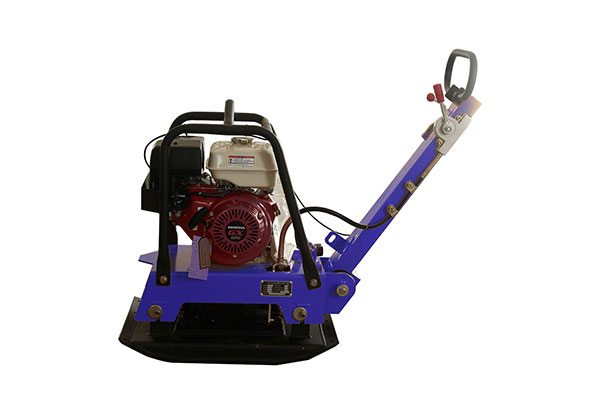
A plate compactor, often referred to as a “vibratory plate compactor” or “wacker plate,” is a heavy-duty mechanical device used to compact various types of materials, primarily soil, gravel, sand, and asphalt. It consists of a flat, heavy steel plate mounted on a frame with an engine and a handle for easy maneuverability. The plate compactor is designed to exert a high-frequency vibration and impact force on the surface it’s placed on, effectively reducing air voids and settling particles to create a denser and more stable substrate.
How to Use a Plate Compactor?
Using a plate compactor is a straightforward process, but it’s essential to follow proper safety precautions and techniques to ensure effective and safe compaction. Here’s how to use a plate compactor effectively:
1. Safety Precautions:
- Wear Protective Gear: Prioritize safety by wearing appropriate personal protective equipment (PPE), including safety glasses, ear protection, gloves, steel-toed boots, and high-visibility clothing.
- Clear the Area: Ensure the work area is clear of debris, obstacles, and people to prevent accidents.
- Read the Manual: Familiarize yourself with the specific plate compactor model you’re using by reading the manufacturer’s manual. This will provide information on proper usage, maintenance, and safety guidelines.
2. Usage Steps:
- Prepare the Surface: Make sure the surface you intend to compact is properly prepared. Remove any loose debris, rocks, or obstacles. The surface should be reasonably level before you begin compacting.
- Position the Plate Compactor: Place the plate compactor at the edge of the area you want to compact. The compactor should be on a stable and level surface to prevent tipping over during operation.
- Start the Plate Compactor: Most plate compactors have a pull-start mechanism similar to a lawnmower. Follow the manufacturer’s instructions to start the engine. Allow the engine to warm up for a few minutes before beginning compaction.
- Hold the Handles: Stand behind the plate compactor and firmly hold onto the handles. Maintain a comfortable and balanced posture throughout the process.
- Begin Compaction: Lower the plate onto the surface you want to compact. The weight of the plate, combined with the vibration, will help to compress the material. Start moving the plate compactor forward slowly while holding onto the handles.
- Overlapping Passes: To achieve even compaction, slightly overlap each pass as you move the plate compactor forward. This will prevent gaps and ensure consistent compaction across the entire area.
- Control Speed: Maintain a steady and controlled pace while operating the plate compactor. Avoid moving too quickly, as it can reduce the effectiveness of compaction.
- Monitor Depth: Pay attention to the depth of compaction. Depending on the material and the compactor’s weight, you might need to make multiple passes to achieve the desired level of compaction.
- Avoid Overcompaction: Be cautious not to overcompact the material, which can lead to unwanted settling and damage. Refer to the manufacturer’s guidelines for recommended compaction levels for the specific material you’re working with.
- Shut Down the Plate Compactor: Once you’ve completed the compaction process, release the throttle to idle and let the engine run for a minute to cool down. Turn off the engine following the manufacturer’s instructions.
3. Maintenance:
After using the plate compactor, perform routine maintenance tasks as outlined in the manufacturer’s manual. This may include cleaning the compactor, checking the oil and fuel levels, inspecting the plate for damage, and addressing any maintenance or repair needs.
How it Works
They work by applying repetitive vibratory forces to the material, reducing air voids and increasing its density. This process enhances load-bearing capacity, prevents settlement, and improves overall stability.
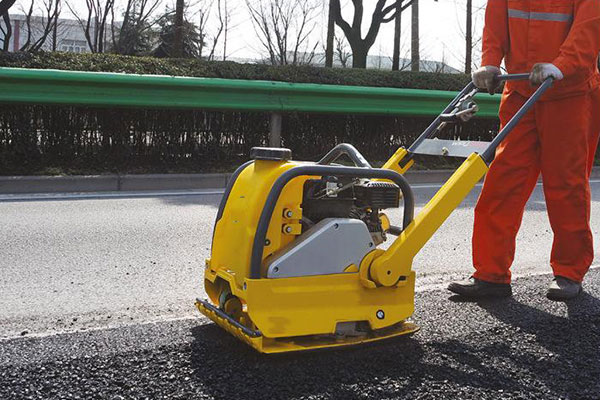
Here’s how plate compactors work in detail:
- Mechanical Structure: Plate compactors consist of a heavy metal plate, usually made of steel, which is mounted on a sturdy frame. The plate is flat and compact, ranging in size from small handheld models to larger machines that require an operator to guide them.
- Engine or Motor: Plate compactors are powered by either gasoline engines or electric motors. The engine or motor generates power that drives an eccentric or unbalanced weight system located beneath the plate.
- Eccentric Weight System: The key component of a plate compactor is the eccentric weight system. This system consists of one or more unbalanced weights mounted on a rotating shaft beneath the plate. As the engine or motor powers the rotation of the shaft, the unbalanced weights create a centrifugal force.
- Vibration Generation: The rotation of the eccentric weights generates a centrifugal force that causes the entire machine, including the plate, to vibrate rapidly in a vertical direction. This vibration is transferred to the ground through the plate.
- Material Compaction: When the vibrating plate comes into contact with the surface of the material to be compacted (such as soil, gravel, or asphalt), the rapid vertical vibrations are transmitted into the material. These vibrations cause the particles within the material to settle closer together, displacing air and reducing voids.
- Densification: As the plate compactor moves forward, the vibrating plate exerts pressure on the material. The combination of downward force and vibratory action compacts the material, making it more dense and stable. The denser material can better withstand the weight of structures or vehicles, reducing the risk of sinking, shifting, or settling over time.
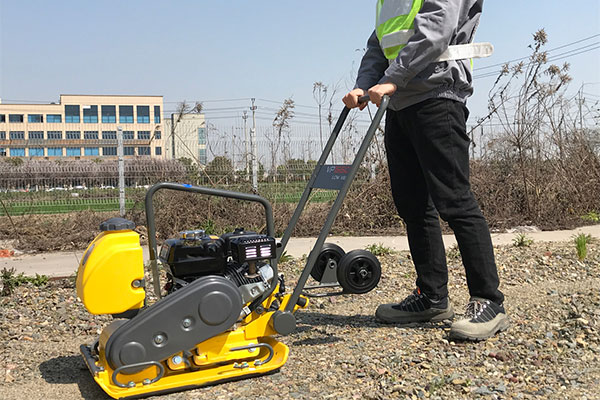
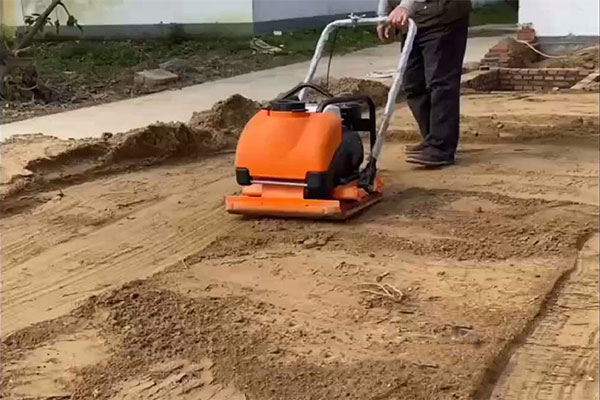
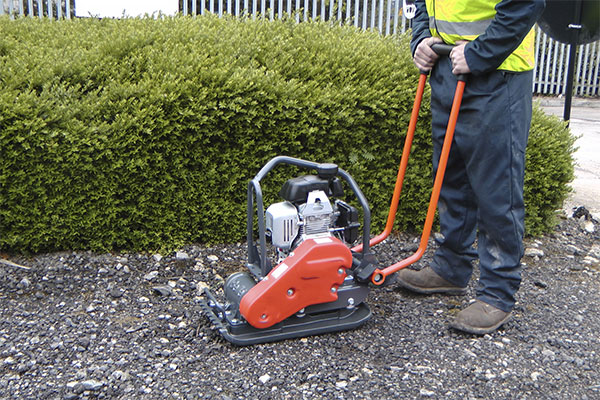
Applications of Plate Compactors
Plate compactors are versatile tools with a wide range of applications across construction and landscaping projects:
- Soil Compaction: Plate compactors are commonly used to compact soil before laying foundations, footings, or slabs. Proper soil compaction prevents settling and enhances the structural integrity of the project.
- Paving: When working with asphalt or concrete, plate compactors help achieve a smooth and even surface, ensuring proper adhesion and reducing the risk of cracks.
- Landscaping: Plate compactors are used to prepare the ground for patios, walkways, and driveways by compacting the base materials like gravel and sand. They also aid in securing interlocking pavers in place.
- Trench Work: When digging trenches for utilities or drainage, plate compactors help compact the soil at the bottom of the trench to prevent future settling.
- Backfilling: After installing pipes or utilities, backfilling the trench with compacted soil ensures stability and prevents shifting.
- Road Repair: Plate compactors are instrumental in repairing and patching damaged sections of roads and pavements. They help blend new materials with existing ones seamlessly.
Benefits of Using a Plate Compactor
- Enhanced Compaction: Plate compactors provide higher compaction efficiency compared to manual methods, resulting in stronger and more stable surfaces.
- Time and Labor Savings: With the ability to cover large areas quickly, plate compactors reduce the time and labor required for compaction tasks.
- Improved Structural Integrity: Proper compaction ensures the longevity and stability of structures, reducing the likelihood of settling and subsequent damage.
- Uniform Results: Plate compactors create uniform compaction throughout the target area, eliminating weak spots and inconsistencies.
- Cost Efficiency: The use of plate compactors minimizes the need for rework, as proper compaction during the initial stages prevents future issues.
- Ease of Use: Modern plate compactors are designed with user-friendly controls and ergonomic features, making them easy to operate and maneuver.
RoadskyMaintenance and Plate Compactor
RoadskyMaintenance is a professional plate compactor supplier from China, offering various models, if you are looking for plate compactor for your project, you can contact us directly for more information.

